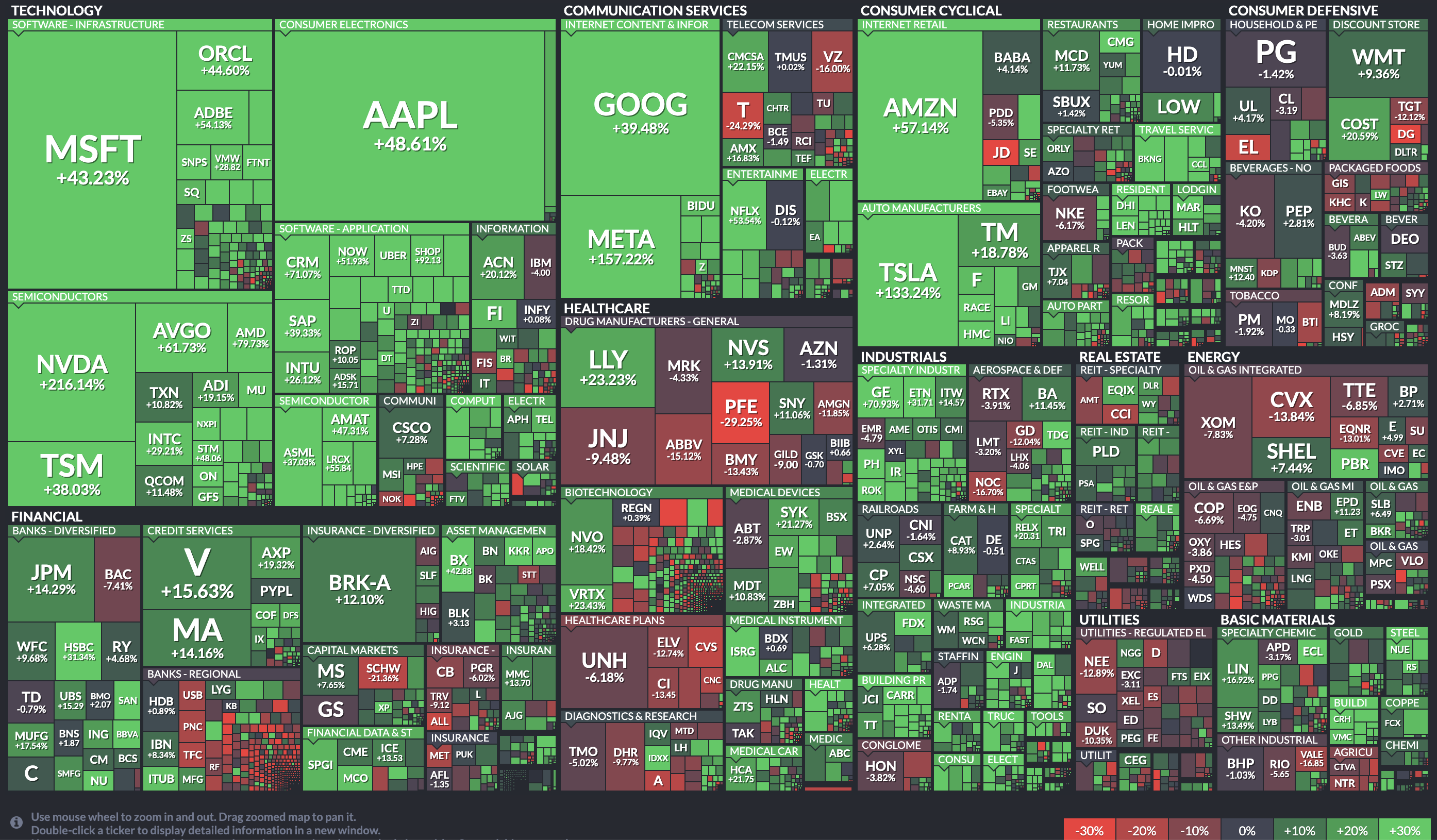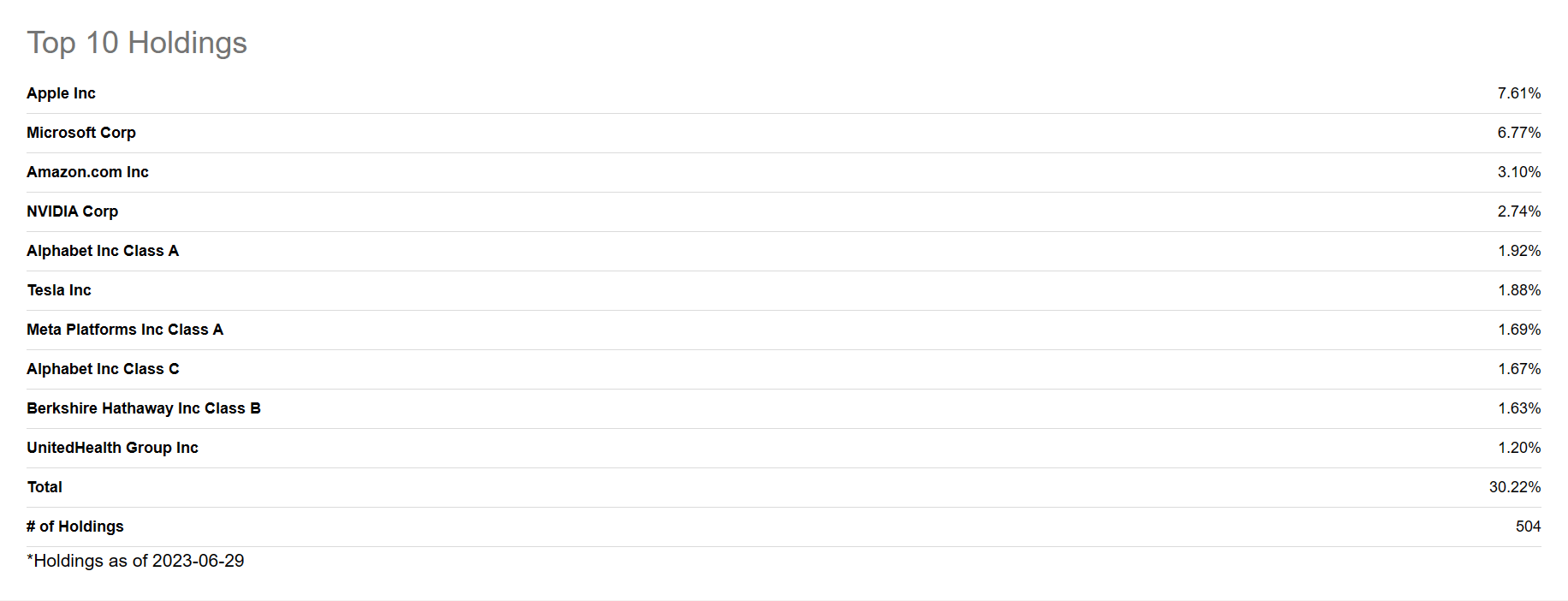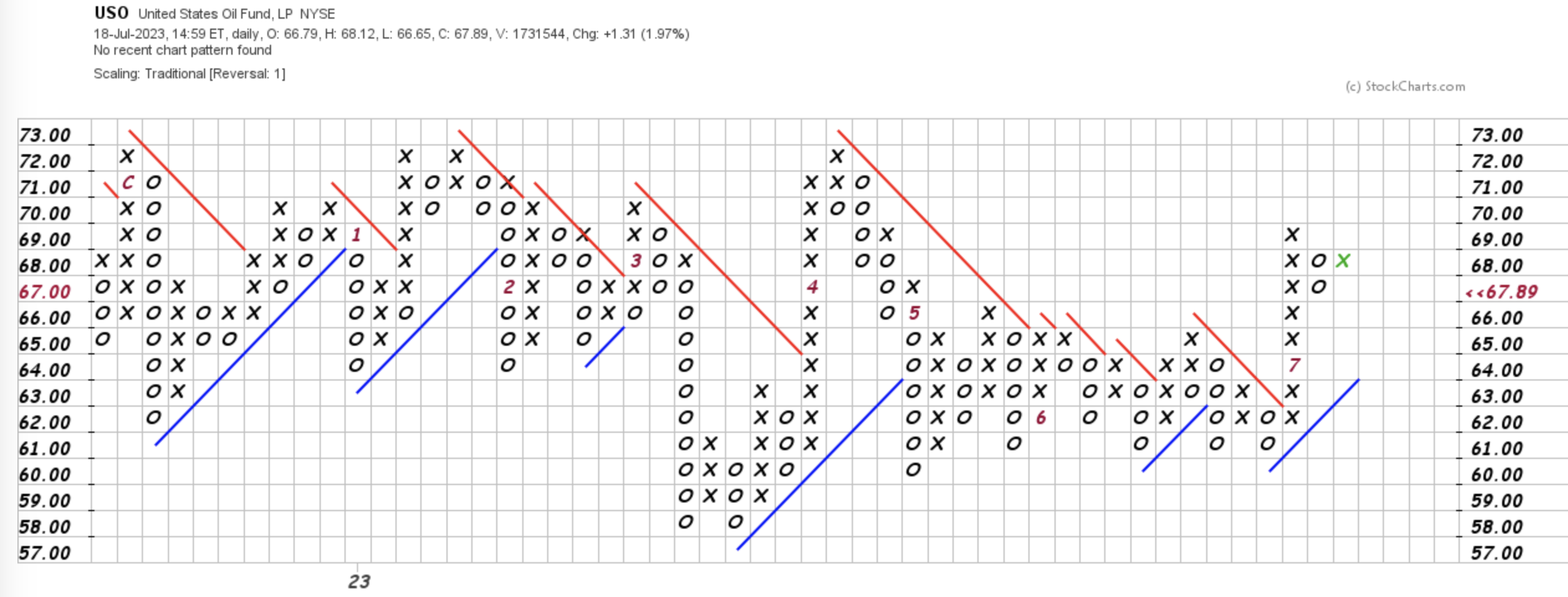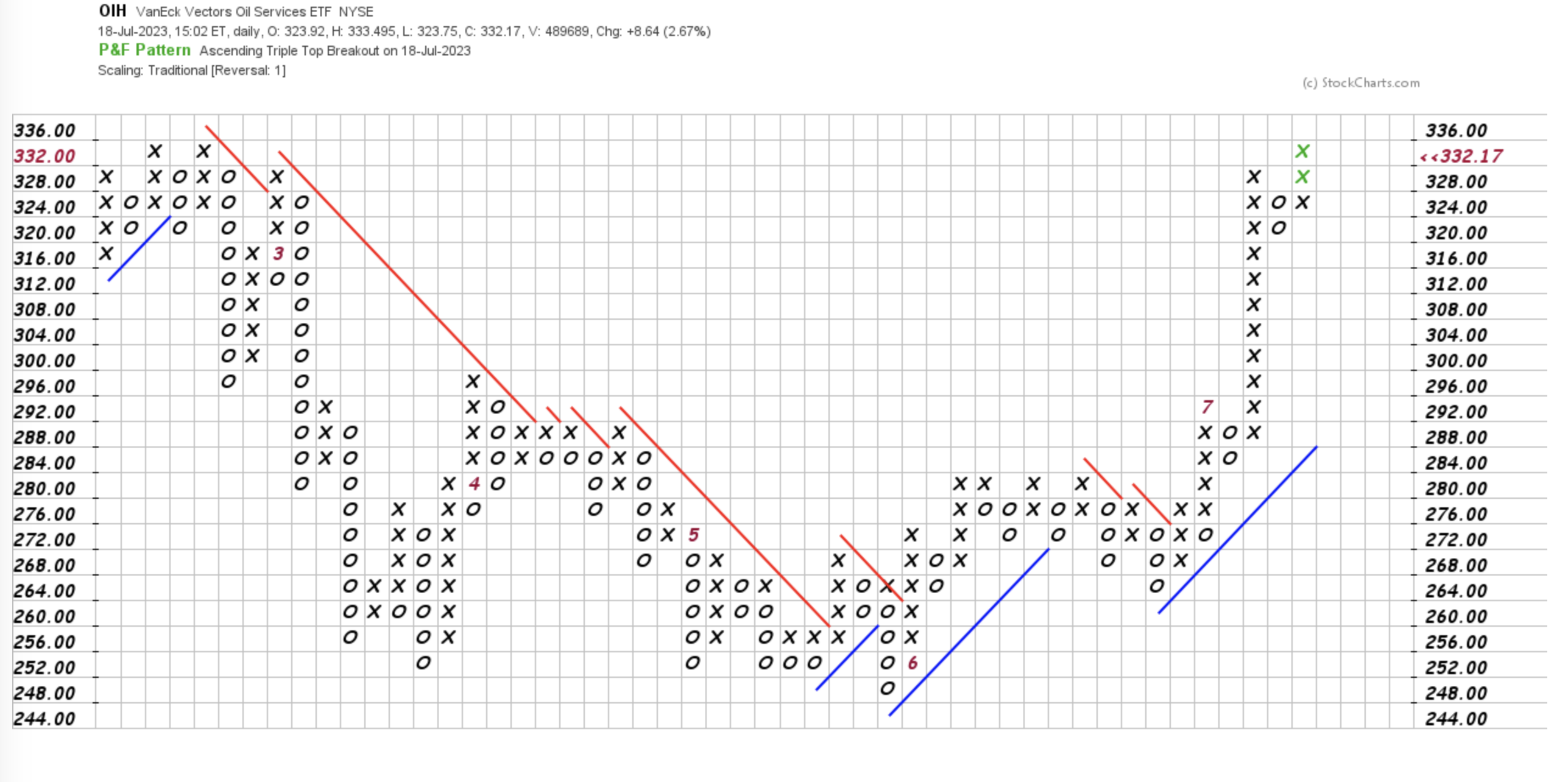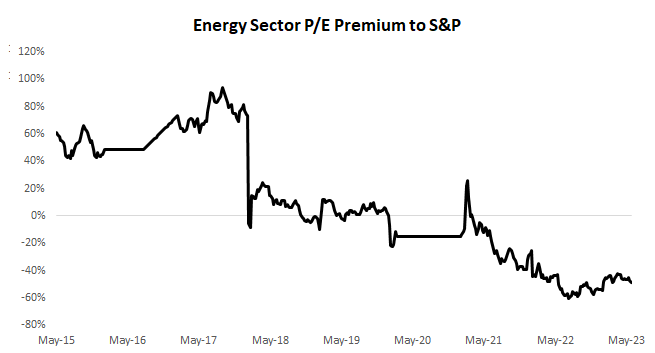Related Blogs
July 18, 2023 | Chris Rowe
For the first six months of 2023, the ongoing theme in the stock market has been the dominant performance of the mega-caps.
The first half of 2023 was strong for the S&P 500, with the index ETF (SPY) returning 16.8%, including dividends.
Looking under the hood, we see narrow leadership, with just 3 of 11 sectors driving most of this performance.
The three rock-star sectors are Technology (XLK) at 40.3%, Communication Services (XLC) at 36.2%, and Consumer Discretionary (XLY) at 32.1%.
These sectors contain the “Magnificent 7” mega-cap stocks, which comprise 27.4% of the index.
But as we enter the year’s second half, the charts reveal a potential change is on the horizon.
Since June 1, the largest blue chip companies have been weakening relative to the broader market.
Given how much of an increase has occurred in these select mega caps, it would make sense that institutions may trim back the position weights among some of those stocks now that the second quarter is over.
Where is that cash going?
Let’s look at a few charts for some hints.
This Sector Relative Strength Matrix compares all of the major sectors we track. This shows the top 10 out of 45.
The former market leaders Energy and Oils are now ranked #1 and #2, respectively.
Looking at a Point and Figure chart of the Energy ETF (XLE) we can see a pattern of higher lows starting with the April low of $74, followed by the May low of $76 and the June low of $77.
The current pullback appears to offer a good, low-risk entry point which a move to $85 will confirm.
The United States Oil Fund (USO) appears similar with a nice move up from the recent consolidation.
The Oil Service Sector (OIH) ETF displays a basing pattern followed by an advance, consolidation, and the recent breakout in July, forming a very bullish-looking chart.
Fund managers aggressively sold energy stocks in the final weeks of Q2, as window dressing motivated them to buy as many tech stocks and get rid of their losers for the quarter. They wanted to show in their statements they had bought Nvidia (NVDA), Tesla (TSLA), and Apple (AAPL) to show their investors they were overexposed to the winners.
Now that we’ve entered Q3, the energy stocks are cheap and institutional investors are likely to buy back some of these stocks, while others are now strongly attracted to their valuation.
The discount to the market is still at extreme levels.
Meanwhile, Apple (AAPL), with its $3T market capitalization, is worth 25% more than the entire energy sector!
With the Nasdaq 100 representing $18T of the total $20T of the Total Market Index capitalization, FAANGMT stocks are overloaded among portfolios while sectors like energy are under-owned.
There are several fundamental catalysts for the oil markets as well.
Saudi Arabia recently cut oil production by 1 million barrels per day and recently stated that this will last through the end of August.
Part of this may be because the Saudi government is selling a secondary offering of Saudi Aramco, the Kingdom’s giant oil holding. It would make sense for the Saudi government to attempt to stabilize or increase oil prices ahead of the offering.
US production is flatlining, and rig counts suggest that US producers are not ramping up for future production. This is while the DOE plans on gradually replenishing its US Strategic Petroleum Reserve (SPR) and as the US has entered peak demand season.
Finally, because oil is traded mostly in US Dollars, it’s important for us to look at a chart of the USD.
The USD is breaking down in a big way here, from a six-month consolidation, and suggests a continuation of the trend lower.
Because it will take more dollars to buy a gallon of oil, this, too is likely to project higher energy prices ahead.
The key takeaway here is to beware that markets are forever adapting and changing to the economic landscape, which is why we favor using an adaptive approach versus a static approach to portfolio construction.
In fact, you can schedule an appointment today with one of our experienced advisors who can guide you through our many adaptive investment models to help find the right one for your portfolio.
If you have any questions or have been considering hiring an advisor, then schedule a free consultation with one of our advisors today. There’s no risk or obligation—let's just talk.
Tags

Free Guide: How to Find the Best Advisor for You
Get our absolutely free guide that covers different types of advisory services you'll encounter, differences between RIAs and broker-dealers, questions you’ll want to ask when interviewing advisors, and data any good financial advisor should know about you and your portfolio.


